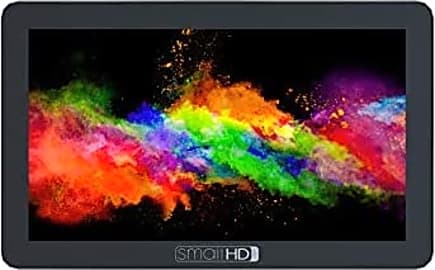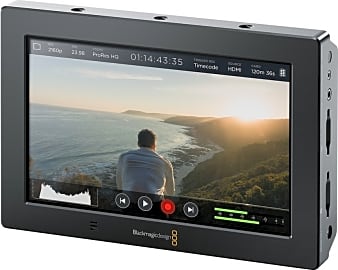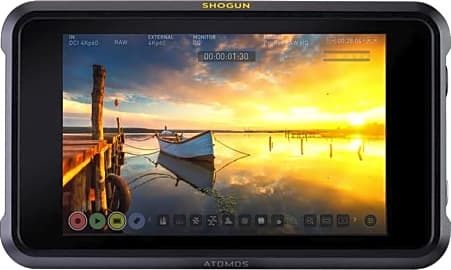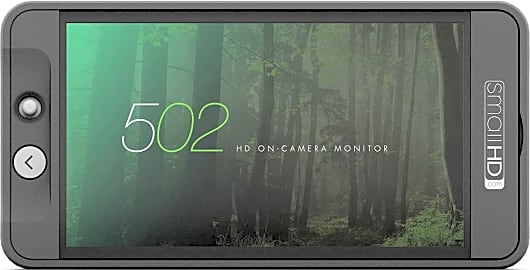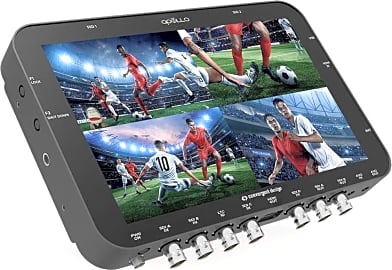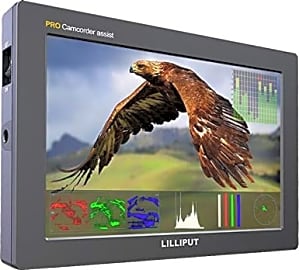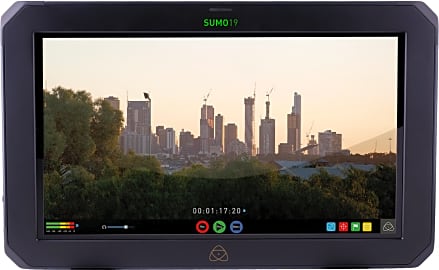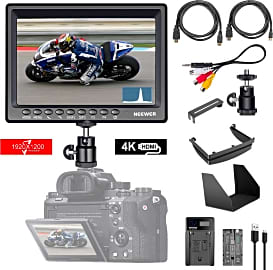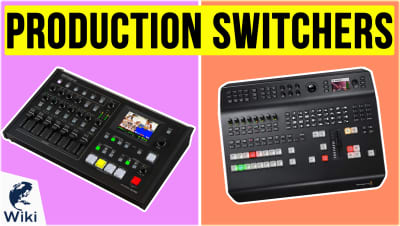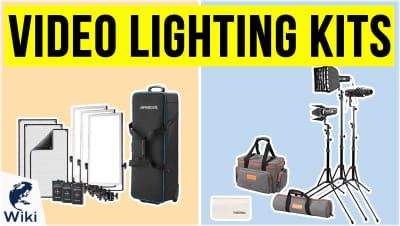The 10 Best Camera Monitors

This wiki has been updated 29 times since it was first published in February of 2018. Whether you're putting together a kit capable of making first-rate indie films or you want a reliable way to view the footage you capture for your personal projects on a larger screen, one of these camera monitors will be ideal. They don't just give you a bigger display, either, as many include features like focus peaking, zebra lines, and waveforms to help you dial in the best settings. When users buy our independently chosen editorial recommendations, we may earn commissions to help fund the Wiki.
Editor's Notes
August 23, 2020:
A few of the items on our previous list got some meaningful upgrades, like the Atomos Ninja V, which now supports 4K recording at up to 60fps, making it a great choice for anyone filming sports, CGI-heavy content, or just looking for a little slow motion. Their Shogun Flame has also been upgraded to the Atomos Shogun 7, now with a full 4K readout that offers over 15 stops of dynamic range, so you can see detail in the shadows that your camera is picking up, but that might otherwise go unnoticed until post-production.
New to the list is the Convergent Design Apollo Multi-Stream, which serves as much as a production switcher as it does a monitor, but can also be a godsend for the director or producer who wants to have eyes on multiple feeds on once, even without live switching.
Prospective owners should keep an eye on connectivity, and start with the outputs on their cameras to determine what monitor will serve them best. The SmallHD Focus, for example, only offers an SDI input geared towards pros, but making it pretty useless if your DSLR or Mirrorless camera only has HDMI or mini HDMI as an output.
April 30, 2019:
While there hasn't been a ton of movement in this category of late, we have seen a few developments that were able to shake up our previous ranking. For starters, Neewer's model previously slated at number two got an upgrade to work with 4K footage. That might have been enough to keep it in the top three, but the quality of so many other models, especially the Atmos Ninja Flame that unseated it, was enough to push it all the way back to our number seven spot.
Two newcomers joined the list to round it out to ten total entries. These are from Blackmagic Design and Lilliput. Now, Blackmagic has been making some of the best low-budget production cameras we've seen in the last decade, but this is one of their first monitors to successfully target a DIY filmmaker audience. The Lilliput has far less history behind it, and like the Neewer, it's decidedly a budget option. Its rugged housing is a nice touch for shooters with butterfingers, or those who work in more dangerous environments.
Special Honors
Atomos Neon If your monitoring needs are less oriented toward camera operation and more so toward reviewing the overall production, these offerings are among the best in the business. They come in sizes ranging from 17 to 55 inches, making them ideal video village companions for indie film and professional sets alike, with full 4K resolution and the ability to be controlled via a smartphone app. atomos.com
SmallHD OLED 22 This is an ideal device for use on location, as its screen suffers from very little glare, and its dynamic range is excellent. It also has a built-in carrying handle, so you can pick it up and move around set with it easily. It weighs less than 10 pounds and boasts a 1 million-to-1 contrast ratio, as well as an integrated speaker for audio playback. smallhd.com
Seeing More Clearly
But today’s monitors are built to siphon off a perfect signal from a camera, and to give anyone who wants to see it a perfect picture of the frame.
It took awhile for the digital revolution to do for video what it did for stills, but by the early teens of the 21st century, indie filmmakers had embraced the likes of the Canon 5D Mark III and the Arri Alexa, and RED’s cinema-quality cameras were the primary bodies on the sets of hit shows like House Of Cards.
Now that digital video capture has become the standard for all but the most illustrious filmmakers, the industry has responded with a slew of useful toys to make shooting digital that much easier. One of those is the camera monitor. Now, Hollywood has long employed monitor systems dating back well before the digital revolution. But today’s monitors are built to siphon off a perfect signal from a camera, and to give anyone who wants to see it a perfect picture of the frame. They boast incredible tools and features, some of which even allow the cameras to surpass the performance they could attain without them.
The Sony a7S series is a great example of how a monitor with the right specs can do more than just show you the picture. On the original a7S, the only way to record in 4K was to send the footage to a monitor capable of creating the files. The camera couldn’t do it in-body until the next generation came along.
An even simpler example comes from the world of DSLRs. Sony’s a series are all mirrorless cameras, so whatever the sensor sees can be relayed to a back viewscreen or outboard monitor, as well as the camera’s electronic viewfinder. On DSLR cameras like the Canon 5D series or Nikon’s D800 lineup, there’s still the traditional mirror and pentaprism combination viewfinder system. For these cameras to shoot video, they have to essentially block all light from hitting the viewfinder, necessitating the use of the back screen or, if you actually want to be able to see the image without squinting, a camera monitor.
There are a dozen other instances where shooting without a dedicated monitor is nearly impossible. Operating a steadicam without a monitor is useless; you’re too far away from the viewfinder, and if you try to use it, you’d likely throw off the unit’s delicate balance. Getting a sense of how your lighting will look in post is another area where monitors shine. Lots of cameras shoot a very flat, desaturated image for maximum flexibility in post. Many monitors come with look-up tables, which alter that image on your monitor to reflect the most common approaches to color grading. That allows you to see what the frame will look like after it goes through post production, and to make sure your lighting setup adheres to the style and story you’re trying to capture.
Choosing The Perfect Monitor For Your Setup
It may seem straightforward to consider the size of a monitor at the outset, but it’s an important feature that you need to balance against your shooting style, budget, and clientele. If you’re working with a director that wants a video village setup, you’ll need to invest in a much bigger monitor than would ever comfortably sit on a camera rig. When you’re outfitting for your rig, you need to add the monitor’s weight in with the weight of your other gear to ensure it doesn’t tip the scales beyond your tripod’s maximum capacity. You’ll also need to take the monitor’s weight into account when calculating the balance of a steadicam or gimbal.
And depending on the constraints of a set, you might need a monitor that can connect wirelessly.
Beyond size and weight, you’ll want to scrutinize resolution. Many monitors can play back or record in 4K, but their practical resolution may drop while the camera is physically recording. This would only become a problem if you were doing some very fine macro focusing with an incredibly shallow depth of field, but if that’s your style, you might want to spring for a monitor that maintains its highest resolution at all times.
We’ve mentioned this ability to record inside some monitors a few times now, and that capability may or may not be essential to your setup. If your camera can output higher resolutions to a monitor than to an internal memory card, this could be important. Many cameras also have ceilings when it comes to the size of memory card they can handle, and a good monitor should be able to outperform that number, allowing you to record for longer without swapping memory.
One final consideration would be connectivity. Some small, simple monitors out there offer nothing but HDMI connections, which can be fine if all you need is a slightly larger viewing screen to pull focus or just enjoy the show as it unfolds. Other sets will demand SDI connections to send large video files at breakneck speeds. Fast SDI connections are vital for live broadcasts, for example. And depending on the constraints of a set, you might need a monitor that can connect wirelessly. These are particularly useful in setting up a video village when shooting on location with a moving camera.
Other Vital Accessories For Videography
Beyond the obvious pieces of gear like cameras, lenses, and tripods, there are some accessories that might fly under the radar for many shooters starting out their careers. One of the most important of these is lighting, as cinematography is ultimately more about shaping light than it is about operating a camera. And there are some great, low-cost video lighting kits on the market that can dramatically elevate the quality of your shots.
Stabilization is probably the other most important component to a shot that has high production value. Tripods are good for this, but they’re a little limited when it comes to movement. Things like steadicams, gimbals, sliders, and dollies are all among the most vital camera movers, and they’re getting more and more affordable every day.
To really get that cinematic look, though, one of the best things you can get is a matte box. This is essentially a small housing that lives just in front of the lens and physically cuts down on any incidental light that the lens would otherwise collect. These are used more or less without exception on film sets, and they make all the difference.


